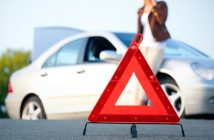The best way to see South Africa in all its splendour is to hop in a car and travel the open road. Not only does travel by car offer a sense of freedom, but the journey itself can be the most enjoyable part of your holiday.
During Easter and the Festive Season, South African motorists frequently travel distances from inland provinces to the coast ranging from 500 to 1500 kilometres. Long-distance driving needs extreme vigilance, and some safe-driving experts have proposed that a motorist should not exceed 10 hours of driving each day. A lengthy journey necessitates preparation, focus, and endurance to ensure everyone’s safety.
Before you embark on a lengthy journey, we’ve put together a few tips to help keep you and your loved ones safe on your journey.

PriceCheck tip: Batteries are notorious for failing when you need them most, especially on a road trip. Invest in a portable battery jumper to help get your car running again.
Plan ahead
You want your journey to be peaceful and pleasurable, so take the time to plan your itinerary and the route you will take. Make a note of the towns and locations along your route where you plan to fill up on petrol, grab food, and use the restrooms. It’s also a good idea to keep a few snacks in the car and perhaps a travel flask filled with coffee or a hot drink of your choice.
If you love to explore off the beaten track, perhaps consider planning a few detours along your route to discover when you are passing through small towns and interesting places. Information centres are your best friend, as they can lead you to our nation’s best-kept secrets and hidden gems.

Of course, it’s also important to plan ahead in terms of car care. Book your car in for a service or a thorough check at your local repair shop before hitting the road. This will give you a chance to replace any car parts and accessories that are worn, broken, or near the end of their life. Have your breaks checked and ensure you have all the correct safety equipment with you in case of a breakdown; including jumper cables, a spare tyre, car jack, and more.
Take frequent breaks
It can be tempting to drive nonstop for hours in order to reach your destination as quickly as possible, but according to a survey by the AAA Foundation for Traffic Safety, your probability of getting involved in an automobile accident increases by one percent for every hour of sleep you lose.
Long-distance drivers are especially susceptible to experiencing microsleep, which is a brief period of unconsciousness corresponding to the onset of sleep or light sleep. Symptoms of weariness include yawning, painful or heavy eyes, and sluggish reaction time. When you begin to recognise these indications, carefully pull over and take a break. Every two hours, you should stop for at least 15 minutes.

Share the driving
Fatigue-related crashes are more likely to occur when the driver is alone; therefore, if you can share the drive, you should. Ensure that all drivers are well rested before you depart, and devise a schedule for when you will need to exchange drivers. If you will be sharing the driving, all drivers must be insured under your motor insurance policy.
Don’t rely on cruise control alone
Although cruise control can make a long journey more tolerable, driver indifference can lead to laziness and a loss of focus. If you intend to use cruise control, be sure to frequently assume physical control of the car.
Obey traffic & road safety regulations
Following the laws may seem simple, but the accident statistics on our roadways speak volumes. Remember to always buckle up, ensure kiddos are in car seats, eliminate all distractions and observe the rules of the road. Be considerate and respectful to other motorists.




